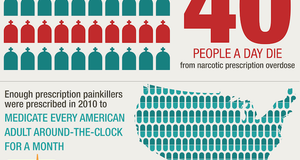|
Featured Article: A Multi-State Analysis of Correctional Boot Camp Outcomes: Identifying Vocational Rehabilitation as a Complement to Shock Incarceration
Reid-MacNevin (1997) argued that correctional boot camp and shock incarceration programs are merely a politically-conjured vessel by which proponents have constructed a façade of crime control. Furthermore, traditional boot camp programs utterly ignore the compendium of prior research which has suggested that deterrence-based criminal justice interventions are wholly ineffective. Predictors such as poverty, unemployment, abuse, and other social factors are the root causes of disadvantage. It is this disadvantage which serves as the ultimate risk factor for criminal activity and recidivism. Legislators and correctional administrators understand that there is little that the justice system can do to combat these social issues in an expeditious manner (Kubrin & Stewart, 2006). However, properly managed correctional boot camp programs can be equally as effective as more traditional intermediate sanctions (Jones & Ross, 1997). Through innovations in intensive treatment protocols, it is possible that these programs may eventually provide a cogent alternative to incarceration.
Contemporary evidence weighs heavily against the use of traditional discipline-oriented correctional boot camp programs as alternatives to incarceration and incapacitation. Many of these initiatives have historically ignored the importance of improving participants’ attitudes and employability, while focusing solely on reducing re-offense statistics. The inherent quelling of individualization and lack of intensive treatment are diametrically opposed to the goal of recidivism reduction through rehabilitation (MacKenzie, Brame, McDowall, & Souryal, 1995; Stincomb, 1999). However, this does not outright preclude the possibility that these programs may be salvaged. Rather, policy makers must determine if traditional boot camp programs can be effectively supplemented or otherwise combined with intensive treatment protocols. Unemployment remains one of the most significant predictors of recidivism (Kempinen & Kurylchek, 2003; Nally, Lockwood, Knutson, & Ho, 2012). Ergo, it is necessary to improve education and vocational rehabilitation programs as well as provide substance abuse counseling if intensive boot camp treatment initiatives are to be effective at reducing recidivism and prison overcrowding by improving the attitudes and employability of graduates.
Though it remains an obscure topic in the literature, the relationship between employability and recidivism is significant. Simply releasing offenders into the communities from which they came and expecting them not to re-offend is tantamount to a coin toss. However, contemporary recidivism data convey that non-violent offenders, particularly those of younger age demographics, have far greater than a 50/50 chance of rearrest (Nally, Lockwood, Knutson, & Ho, 2012). Nonetheless, the efficacy of employment intervention through probation agencies has been empirically substantiated. However, previous programs have not been necessarily studious in selecting participants (Hancock & Raeside, 2009). The evidence calls for a paradigm shift in the philosophy of correctional rehabilitation; one which instills discipline without sacrificing individualism and measures success through reintegration rather than through punishment.
Bhati, A. S. & Piquero, A. R. (2007). Estimating the impact of incarceration on subsequent offending trajectories: Deterrent, criminogenic, or null effect? Journal of Criminal Law & Criminology, 98(1), 207-253.
Bottcher, J. & Ezell, M. E. (2005). Examining the effectiveness of boot camps: A randomized experiment with a long-term follow up. Journal of Research in Crime and Delinquency, 42(3), 309-332. doi:10.1177/0022427804271918
Bridges, A. (1998). Increasing offender employability. Probation Journal, 45(2), 107. doi:10.1177/026455059804500216
Chen, E. Y. (2008). Impacts of “three strikes and you’re out” on crime trends in California and throughout the United States. Journal of Contemporary Criminal Justice, 24(4), 345-370. doi:10.1177/1043986208319456
Colins, O., Vermeiren, R., Vahl, P., Markus, M., Broekaert, E., & Doreleijiers, T. (2011). Psychiatric disorder in detained male adolescents as risk factor for serious recidivism. Canadian Journal of Psychiatry, 56(1), 44-50.
Davidson, W. S., Jimenez, T. R., Onifade, E., & Hankins, S. S. (2010). Student experiences of the Adolescent Diversion Project: A community-based exemplar in the pedagogy of service-learning. American Journal of Community Psychology, 46(3), 442-458. doi:10.1007/s10464-010-9337-6
Davidson, W. S., Redner, R., Blakely, C. H., Mitchell, C. M., & Emshoff, J. G. (1987). Diversion of juvenile offenders: An experimental comparison. Journal of Consulting and Clinical Psychology, 55(1), 68-75.
Douglas, K. S., Epstein, M. E., & Poythress, N. G. (2008). Criminal recidivism among juvenile offenders: Testing the incremental and predictive validity of three measures of psychopathic features. Law and Human Behavior, 32(5), 423-438. doi:10.1007/s10979-007-9114-8
Duwe, G. & Kerschner, D. (2008). Removing a nail from the boot camp coffin: An outcome evaluation of Minnesota’s Challenge Incarceration Program. Crime & Delinquency, 54(4), 614-643. doi:10.1177/0011128707301628
Eskridge, C. W. (2004). Criminal justice: Concepts and issues (4th ed.). Los Angeles, CA: Roxbury Publishing.
Graffam, J., Shinkfield, A. J., & Hardcastle, L. (2008). The perceived employability of ex-prisoners and offenders. International Journal of Offender Therapy and Comparative Criminology, 52(6), 673-685. doi:10.1177/0306624X07307783
Hancock, P. G. & Raeside, R. (2009). Modeling factors central to recidivism: An investigation of sentence management in the Scottish Prison Service. The Prison Journal, 89(1), 99-118. doi:10.1177/0032885508330445
Harris, A. (2007). Diverting and abdicating judicial discretion: Cultural, political, and procedural dynamics in California juvenile justice. Law & Society Review, 41(2), 387-427.
Jones, M. & Ross, D. L. (1997). Electronic house arrest and boot camp in North Carolina: Comparing recidivism. Criminal justice Policy Review, 8(4), 383-403. doi:10.1177/088740349700800404
Kempinen, C. A. & Kurlychek, M. C. (2003). An outcome evaluation of Pennsylvania’s boot camp: Does rehabilitative programming within a disciplinary setting reduce recidivism?. Crime & Delinquency, 49(4), 581-602. doi:10.1177/0011128703252664
Kilgore, D. & Meade, S. (2004). “Look what boot camp’s done for me”: Teaching and learning at Lakeview Academy. Journal of Correctional Education, 55(2), 170-185.
Kubrin, C. E. & Stewart, E. A. (2006). Predicting who reoffends: The neglected role of neighborhood context in recidivism studies. Criminology, 44(1), 165-197.
Kunselman, J. C. & Vito, G. F. (2002). Questioning mandatory sentencing efficiency: A case study of persistent felony offender rapists in Kentucky. American Journal of Criminal Justice, 27(1), 53-68.
Leschied, A. W., Austin, G. W., & Jaffe, P. G. (1988). Impact of the Young Offenders Act on recidivism rates of special needs youth: Clinical and policy implications. Canadian Journal of Behavioural Science, 20(3), 322-331.
Lussier, P. & Davies, G. (2011). A person-oriented perspective on sexual offenders, offending trajectories, and risk of recidivism: A new challenge for policymakers, risk assessors, and actuarial prediction? Psychology, Public Policy, and Law, 17(4), 530-561. doi:10.1037/a0024388
MacKenzie, D. L., Brame, R., McDowall, D., & Souryal, C. (1995). Boot camp prisons and recidivism in eight states. Criminology, 33(3), 327-357.
Nally, J., Lockwood, S., Knutson, K., & Ho, T. (2012). An evaluation of the effect of correctional education programs on post-release recidivism and employment: An empirical study in Indiana. Journal of Correctional Education, 63(1), 69-88.
Reid-MacNevin, S.A. (1997). Boot camps for young offenders: A politically acceptable punishment. Journal of Contemporary Criminal Justice, 13(2), 155-171. doi:10.1177/1043986297013002005
Stincomb, J. B. (1999). Recovering from the shocking reality of shock incarceration – What correctional administrators can learn from boot camp failures. Corrections Management Quarterly, 3(4), 43-52.
Varghese, F. P., Hardin, E. E., Bauer, R. L., & Morgan, R. D. (2010). Attitudes toward hiring offenders: The roles of criminal history, job qualifications, and race. International Journal of Offender Therapy and Comparative Criminology, 54(5), 769-782. doi:10.1177/0306624X09344960
Vennard, J. & Hedderman, C. (2009). Helping offenders into employment: How far is voluntary sector expertise valued in a contracting-out environment? Criminology and Criminal Justice, 9(2), 225-245. doi:10.1177/174889580910349
References
Bhati, A. S. & Piquero, A. R. (2007). Estimating the impact of incarceration on subsequent offending trajectories: Deterrent, criminogenic, or null effect? Journal of Criminal Law & Criminology, 98(1), 207-253.
Bottcher, J. & Ezell, M. E. (2005). Examining the effectiveness of boot camps: A randomized experiment with a long-term follow up. Journal of Research in Crime and Delinquency, 42(3), 309-332. doi:10.1177/0022427804271918
Bridges, A. (1998). Increasing offender employability. Probation Journal, 45(2), 107. doi:10.1177/026455059804500216
Chen, E. Y. (2008). Impacts of “three strikes and you’re out” on crime trends in California and throughout the United States. Journal of Contemporary Criminal Justice, 24(4), 345-370. doi:10.1177/1043986208319456
Colins, O., Vermeiren, R., Vahl, P., Markus, M., Broekaert, E., & Doreleijiers, T. (2011). Psychiatric disorder in detained male adolescents as risk factor for serious recidivism. Canadian Journal of Psychiatry, 56(1), 44-50.
Davidson, W. S., Jimenez, T. R., Onifade, E., & Hankins, S. S. (2010). Student experiences of the Adolescent Diversion Project: A community-based exemplar in the pedagogy of service-learning. American Journal of Community Psychology, 46(3), 442-458. doi:10.1007/s10464-010-9337-6
Davidson, W. S., Redner, R., Blakely, C. H., Mitchell, C. M., & Emshoff, J. G. (1987). Diversion of juvenile offenders: An experimental comparison. Journal of Consulting and Clinical Psychology, 55(1), 68-75.
Douglas, K. S., Epstein, M. E., & Poythress, N. G. (2008). Criminal recidivism among juvenile offenders: Testing the incremental and predictive validity of three measures of psychopathic features. Law and Human Behavior, 32(5), 423-438. doi:10.1007/s10979-007-9114-8
Duwe, G. & Kerschner, D. (2008). Removing a nail from the boot camp coffin: An outcome evaluation of Minnesota’s Challenge Incarceration Program. Crime & Delinquency, 54(4), 614-643. doi:10.1177/0011128707301628
Eskridge, C. W. (2004). Criminal justice: Concepts and issues (4th ed.). Los Angeles, CA: Roxbury Publishing.
Graffam, J., Shinkfield, A. J., & Hardcastle, L. (2008). The perceived employability of ex-prisoners and offenders. International Journal of Offender Therapy and Comparative Criminology, 52(6), 673-685. doi:10.1177/0306624X07307783
Hancock, P. G. & Raeside, R. (2009). Modeling factors central to recidivism: An investigation of sentence management in the Scottish Prison Service. The Prison Journal, 89(1), 99-118. doi:10.1177/0032885508330445
Harris, A. (2007). Diverting and abdicating judicial discretion: Cultural, political, and procedural dynamics in California juvenile justice. Law & Society Review, 41(2), 387-427.
Jones, M. & Ross, D. L. (1997). Electronic house arrest and boot camp in North Carolina: Comparing recidivism. Criminal justice Policy Review, 8(4), 383-403. doi:10.1177/088740349700800404
Kempinen, C. A. & Kurlychek, M. C. (2003). An outcome evaluation of Pennsylvania’s boot camp: Does rehabilitative programming within a disciplinary setting reduce recidivism?. Crime & Delinquency, 49(4), 581-602. doi:10.1177/0011128703252664
Kilgore, D. & Meade, S. (2004). “Look what boot camp’s done for me”: Teaching and learning at Lakeview Academy. Journal of Correctional Education, 55(2), 170-185.
Kubrin, C. E. & Stewart, E. A. (2006). Predicting who reoffends: The neglected role of neighborhood context in recidivism studies. Criminology, 44(1), 165-197.
Kunselman, J. C. & Vito, G. F. (2002). Questioning mandatory sentencing efficiency: A case study of persistent felony offender rapists in Kentucky. American Journal of Criminal Justice, 27(1), 53-68.
Leschied, A. W., Austin, G. W., & Jaffe, P. G. (1988). Impact of the Young Offenders Act on recidivism rates of special needs youth: Clinical and policy implications. Canadian Journal of Behavioural Science, 20(3), 322-331.
Lussier, P. & Davies, G. (2011). A person-oriented perspective on sexual offenders, offending trajectories, and risk of recidivism: A new challenge for policymakers, risk assessors, and actuarial prediction? Psychology, Public Policy, and Law, 17(4), 530-561. doi:10.1037/a0024388
MacKenzie, D. L., Brame, R., McDowall, D., & Souryal, C. (1995). Boot camp prisons and recidivism in eight states. Criminology, 33(3), 327-357.
Nally, J., Lockwood, S., Knutson, K., & Ho, T. (2012). An evaluation of the effect of correctional education programs on post-release recidivism and employment: An empirical study in Indiana. Journal of Correctional Education, 63(1), 69-88.
Reid-MacNevin, S.A. (1997). Boot camps for young offenders: A politically acceptable punishment. Journal of Contemporary Criminal Justice, 13(2), 155-171. doi:10.1177/1043986297013002005
Stincomb, J. B. (1999). Recovering from the shocking reality of shock incarceration – What correctional administrators can learn from boot camp failures. Corrections Management Quarterly, 3(4), 43-52.
Varghese, F. P., Hardin, E. E., Bauer, R. L., & Morgan, R. D. (2010). Attitudes toward hiring offenders: The roles of criminal history, job qualifications, and race. International Journal of Offender Therapy and Comparative Criminology, 54(5), 769-782. doi:10.1177/0306624X09344960
Vennard, J. & Hedderman, C. (2009). Helping offenders into employment: How far is voluntary sector expertise valued in a contracting-out environment? Criminology and Criminal Justice, 9(2), 225-245. doi:10.1177/174889580910349
Save Citation » (Works with EndNote, ProCite, & Reference Manager)
APA 6th
Jones, J. A. (2012). "A Multi-State Analysis of Correctional Boot Camp Outcomes: Identifying Vocational Rehabilitation as a Complement to Shock Incarceration." Inquiries Journal/Student Pulse, 4(09). Retrieved from http://www.inquiriesjournal.com/a?id=689
MLA
Jones, Joshua A. "A Multi-State Analysis of Correctional Boot Camp Outcomes: Identifying Vocational Rehabilitation as a Complement to Shock Incarceration." Inquiries Journal/Student Pulse 4.09 (2012). <http://www.inquiriesjournal.com/a?id=689>
Chicago 16th
Jones, Joshua A. 2012. A Multi-State Analysis of Correctional Boot Camp Outcomes: Identifying Vocational Rehabilitation as a Complement to Shock Incarceration. Inquiries Journal/Student Pulse 4 (09), http://www.inquiriesjournal.com/a?id=689
Harvard
JONES, J. A. 2012. A Multi-State Analysis of Correctional Boot Camp Outcomes: Identifying Vocational Rehabilitation as a Complement to Shock Incarceration. Inquiries Journal/Student Pulse [Online], 4. Available: http://www.inquiriesjournal.com/a?id=689
Suggested Reading from Inquiries Journal
Every single person living in the United States today is affected by juvenile crime. It affects parents, neighbors, teachers, and families. It affects the victims of crime, the perpetrators, and the bystanders. While delinquency... MORE»
In the American healthcare system there have been few trends as persistent, yet avoidable, as the rise in prescription drug overdoses. Between 1999 and 2008 prescription overdoses quadrupled to nearly twenty thousand per... MORE»
The school-to-prison pipeline, a "partnership” between juvenile courts and the school system, "developed through a punitive and harmful framework to the detriment of many vulnerable children and adolescents,” is a phenomenon of the late twentieth century (Mallet, 15). However, juvenile courts and the school system... MORE»
Heroin use and the consequences that come from it are skyrocketing around the United States. From major metropolitan areas to rural towns, millions of people are in the throes of opiate addiction. The traditional response to the illegal use and possession of drugs, including opiates, in the United States is incarceration, but this... MORE»
Latest in Criminology & Criminal Justice
2019, Vol. 11 No. 01
While media coverage and politicians constantly acknowledge the inadequacies of the criminal justice system in managing victims and offenders of color and low socioeconomic status, the discussion about the failure of the criminal justice system... Read Article »
2018, Vol. 10 No. 01
This paper analyzes the ongoing drug war being waged between Mexican drug trafficking organizations (DTOs), their rivals, and the U.S./Mexican governments. This analysis is conducted through the lens of drug control; namely, through an examination... Read Article »
2011, Vol. 3 No. 01
The search for the criminal personality or super trait has captured both the minds and imaginations of academics and the wider community (Caspi et al., 1994). Partly, this is due to a stubborn aversion to the notion that normal, regular people rape... Read Article »
2015, Vol. 5 No. 1
Organized crime and terrorist organizations cannot be battled by force alone; anti-money laundering (AML) techniques have become key tools to trace these individuals through their finances. Every country has an interest in implementing internationally... Read Article »
2016, Vol. 6 No. 2
This paper explores the role of public institutions in reducing or fostering neighborhood violence and crime. Understanding institutional density as a neighborhood effect, this paper examines how ten public institutions and structures influence... Read Article »
2016, Vol. 8 No. 07
Heroin use and the consequences that come from it are skyrocketing around the United States. From major metropolitan areas to rural towns, millions of people are in the throes of opiate addiction. The traditional response to the illegal use and... Read Article »
2016, Vol. 3 No. 1
It is generally accepted among researchers that incidence of crime is on average higher around vacant and abandoned properties because they can serve as safe havens for criminal activity. However, there has been little research investigating the... Read Article »
|



















